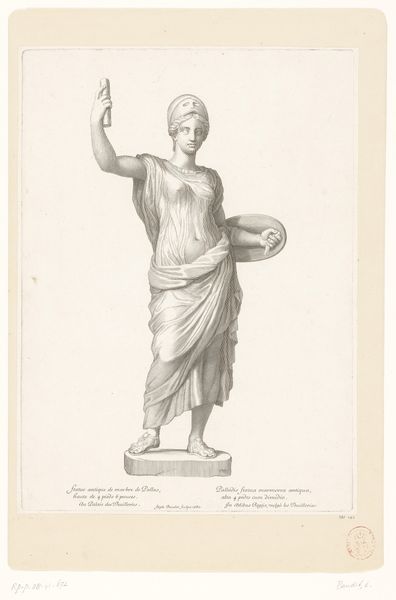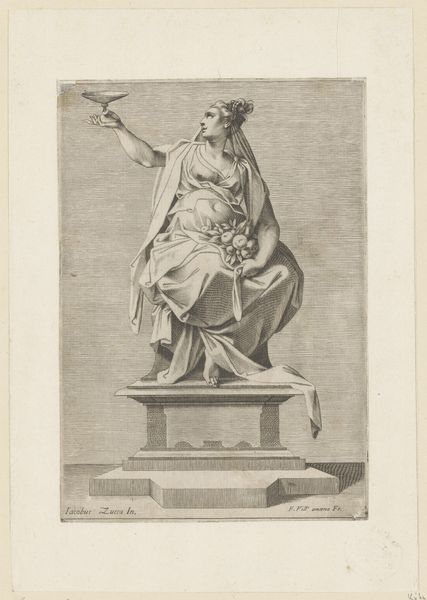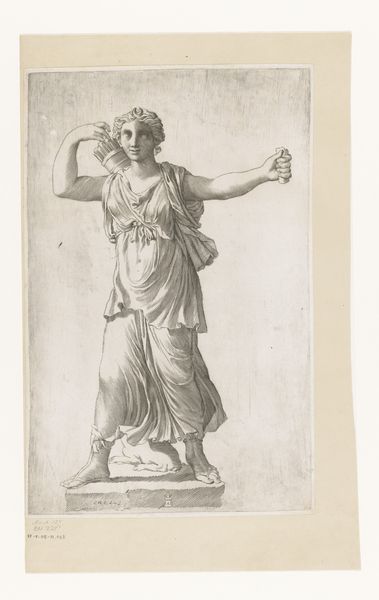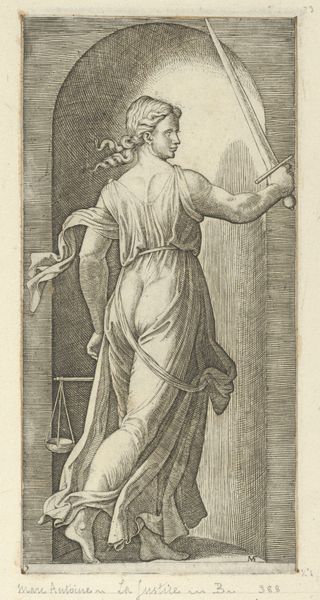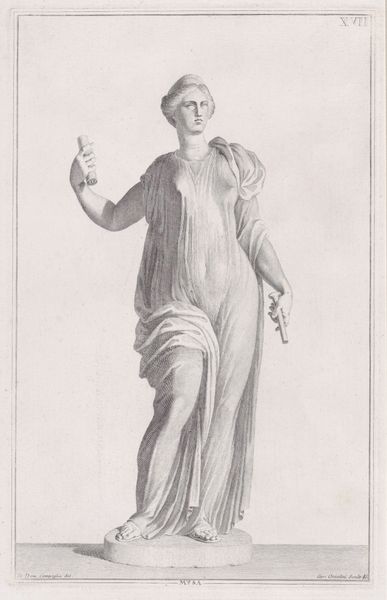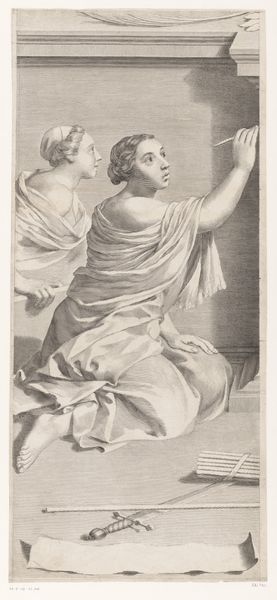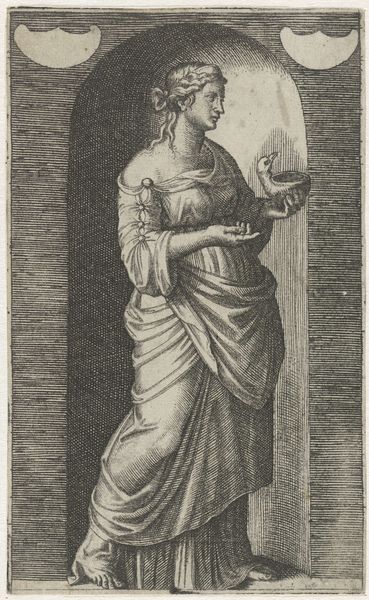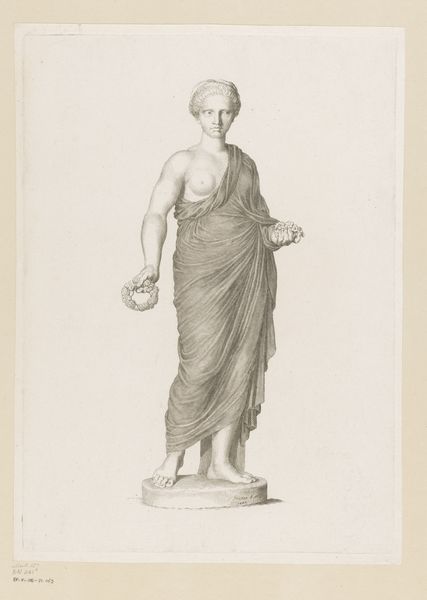
engraving
#
portrait
#
baroque
#
figuration
#
history-painting
#
engraving
Dimensions: height 385 mm, width 244 mm
Copyright: Rijks Museum: Open Domain
Curator: This is "Vrouwelijke heilige met hart," which translates to "Female saint with heart." It’s an engraving created sometime between 1690 and 1730 by an anonymous artist, showcasing a saintly figure rendered in the Baroque style. Editor: My initial response is one of cool detachment. The stark lines of the engraving and the muted tones project a reserved feeling, despite the ostensible drama. I am drawn to the way her drapery hangs— its interplay of lines gives a sense of movement, but a tightly controlled one. Curator: The engraving captures elements characteristic of its time, embedding it in the visual culture that permeated European society. Notice how Sainte Foy holds a heart in her raised hand, an explicit symbol of her piety and suffering as a martyr. This kind of overt iconography helped reinforce religious beliefs, particularly through the accessibility offered by engravings for broader audiences. Editor: Yes, the formal aspects of the printmaking echo this. Consider how the light and shadow, achieved through meticulous line work, give depth and weight to her figure. She leans quite heavily on the block there. The geometric cube stands out too – what might it signify in this structured arrangement of forms? Curator: Scholars propose the block could be interpreted as an emblem of the saint's steadfast faith—immovable in the face of adversity, literally the foundation on which she leans. During the Baroque era, the dissemination of prints like this not only canonized the image of Sainte Foy but also contributed to her cult following, which experienced resurgences even centuries after her martyrdom. Editor: From a formal perspective, I find that her posture also lends itself to contemplation: the slight contrapposto, the gentle inclination of her head. This evokes something more reflective than simple declaration of piety. Also, notice how the engraving technique allows for a nuanced play of texture, from the smoothness of her skin to the heavier fabric of her garments. These contribute layers to her portrayal. Curator: You are correct. Understanding that engravings like this facilitated religious dialogue helps contextualize its creation and audience reception. The politics of image-making influenced even what would seem to be purely devotional iconography. Editor: So it's clear we find a confluence of style, faith, and symbolic structure. Ultimately, a study of this Baroque-era print not only illuminates a devotion of that period but a command of visual language through compositional arrangement. Curator: Indeed. What begins as simply "a saint with a heart" unfurls into a compelling insight of religion and print culture intersection, providing much to unpack beyond what the surface offers.
Comments
No comments
Be the first to comment and join the conversation on the ultimate creative platform.
